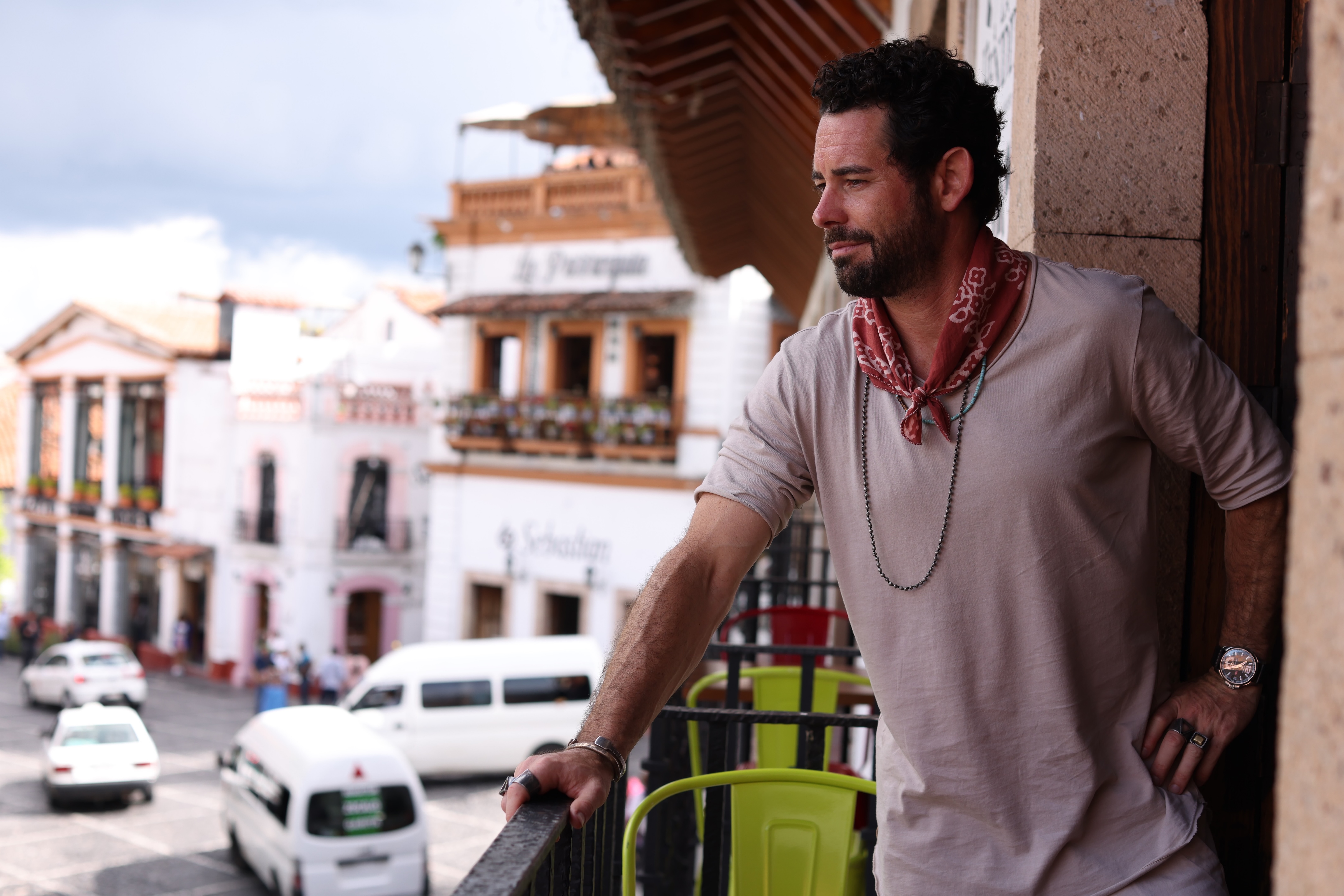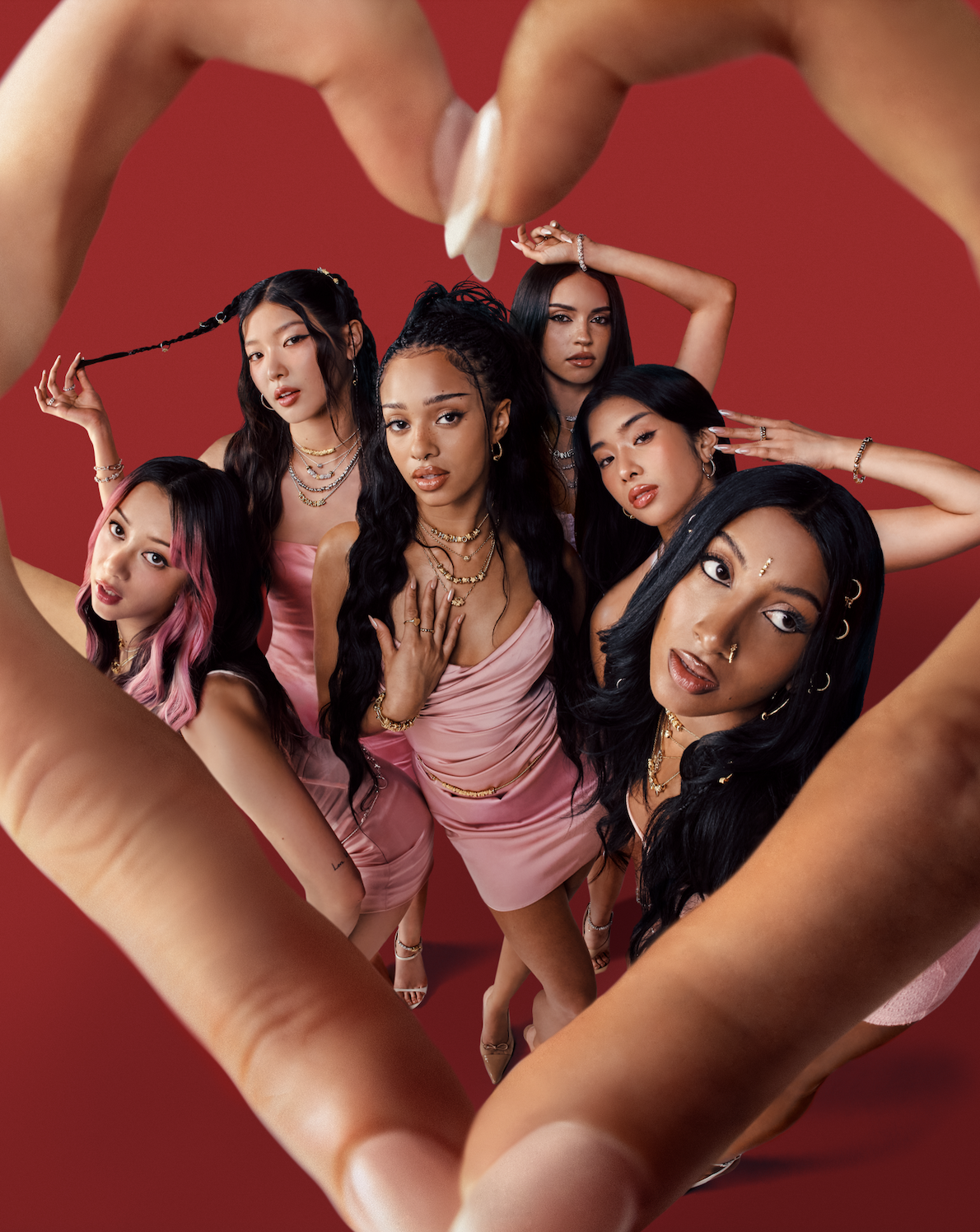“In the dark times / Will there also be singing? / Yes, there will be singing. / About the dark times.” —Bertolt Brecht


We continue to sing, even if no one is there to witness. In her newest work, _Yes, there will be singing_, Diana Thater invites Whale 52 to sing for anyone willing to listen. Whale 52 is likely a male blue whale or a hybrid of fin and blue whales, which has eluded researchers since the late 1980s. He calls out at 52 hertz, a frequency outside that of a normal whale of his kind. His call has been recorded all around the world, yet nobody has ever seen him.
That brings this disconnected song into an empty gallery, streaming twenty-four-seven via David Zwirner’s digital exhibition portal. In an empty concrete room, Whale 52’s song reverberates off of the walls as lights cycle through an array of colors. Sitting at home, likely separate from your friends and family, one can’t help but to sympathize with Whale 52.
Thater’s work, a pioneering force in video installation, envelopes viewers in imagery of the natural world within a gallery space. However, the pandemic forced Thater to take a new approach. It was finally time to engage with a subject she has been fascinated with for years. This time, Thater could not capture the “world’s loneliest whale” on video as she has her other subjects. She was forced to take a new turn in format, this time working with sound. The artist took the opportunity to focus on this lonely aquatic mammal, separated from others of his species. As the title suggests, we continue to sing even if nobody can hear us.
* * *
**Were you working on this piece prior to the pandemic hitting, did you have to alter the piece once it hit, or was it something that was born out of the necessity of the pandemic?**
It’s actually a piece that I’ve had in the back of my mind for several years, because I never knew how I could make it. This whale, Whale 52, has never been seen. He’s never been videoed, so there’s no visual component to it. Because I work primarily with representational imagery, I didn’t know of a way that I could make this piece. I had never really made a sound piece on my own. I’ve done three collaborative works with T. Kelly Mason where we’ve used music. I, myself, have never worked with sound before. I always knew I’d have to do it someday. So, I had this piece in the back of my mind. I was working on another big piece for David Zwirner which was supposed to be opening in September, but the shoot got cancelled because of the pandemic. We had to travel for it, and I had a crew, and then the show got postponed. I was so depressed by everything, right, like everybody, and then to have my work interrupted in that way. Either I was going to get really depressed, or I was going to make some art. I had two choices. So I started thinking, “what am I going to make?” and Whale 52 suddenly came back to me. I went through my notebooks. I had read about the whale years ago in a magazine, maybe National Geographic or the Smithsonian, or something. (flipping through her notebook) I cut out the article from 2018, and I pasted it in my notebook. So, I always had it sitting in this notebook. I thought now I can make something about not being able to see someone and only being able to hear them at a distance. Let me figure out how to do that. I decided I would learn how to edit sound. Then David Zwirner said, “how are we going to show this?” and I said, “I want to put it at Zwirner, in the space I was going to use for my show, and just lock it.” No one could ever see it. You could only see it from the livestream. Prior to that, he said about five people a day will see it if we put it up in the gallery. I didn’t want five people to see it. I wanted everybody with access to the livestream to be able to see it. It emphasizes distance, space, and isolation. We’re not communicating via body language, or even by facial expression, because you and I aren’t even looking at each other right now. We’re only communicating through sound, voice, shaking our heads. But all of the other cues and keys are gone.
**You've spoken briefly on the idea of accessibility in this piece regarding access to the space, to the unseen Whale 52, the whale's access to other whales, etc. Can you talk more about that?**
Well, no one knows where he is. So you have this connection through multiple layers of technology to a being who may or may not still be alive. The last recordings of Whale 52 were made in the 90s. It’s not a direct connection between you and the whale. There are layers of technology and interference. What you see when you see the piece is this livestream of this room in dissolving colors, with the sound of whales singing. But there’s a delay between the camera and the computer, the computer and the platform, the platform and your computer. Then that all depends on the speed of your computer. You’re always looking into the past. You’re looking at things that _have_ happened, sounds that _have_ been heard by someone – us. There’s this idea of accessibility through the livestream, but inaccessibility, because you’re looking back through time. It’s like looking at a star exploding that happened hundreds of years ago that we just see now. There’s that delay. Accessibility to the artwork, but inaccessibility to the subject of the work.
**Your work often looks to the natural world. That is obviously present here with the whale, but it is an otherwise unnatural way of viewing. The pandemic, a threat from the natural world, looms over the piece. Did you take these conflicts of natural or organic vs. unnatural or digital into account?**
My work has always been about this clash. I like to call it culture and nature. It’s always dealt with the place where these two ways of being in the world come together. Sometimes it’s a clash that oftentimes ends in conflict, then dominance and submission, and eventually extinction. It’s a very common trajectory. At the same time, the only way we know about animals other than through zoos is through technology – cameras, recording devices of all kinds. The minute photography, film, and video are invented, you have tons of documentation of the natural world. It’s the first thing everybody does. I teach, and the first videos my students make is of the Pacific Ocean. Every one of them. There’s this question about the relationship between the natural and unnatural. It’s multifaceted and technology is endemic to it. It’s the only way we can touch the unnatural world, maybe without disturbing it. I went to the Grand Canyon, and right outside is an IMAX theater with a film of the Grand Canyon. It’s awesome. I said they should just close the Grand Canyon and leave it alone, and everyone can stop throwing their garbage everywhere. You just stop, see the movie, and go home.
**In my hometown we have one of the biggest zoos in the country, and right at the front there’s a massive IMAX. You can just go into the IMAX and see everything you see in the zoo.**
And leave the animals alone! That’s always my point. Look at National Geographic, look at film and movies, look at photography, but just leave it alone.
**I want to also ask about the pandemic’s, and thus nature's interaction, with us.**
I think it’s important to note how people are calling it the Revenge of the Pangolin, because it was transmitted to humans from a pangolin. In the beginning, people talked about the irony of it, because the pangolin is the single most trafficked animal in the world. They’ve been poached out of existence, particularly by the Chinese who use them for traditional medicine. It’s ironic that the pangolin is what brought us this pandemic.
**There's an almost spectral element to this. The specter of the whale, the specter of the pandemic, but also the specter of the viewer watching this room. Was this on your mind when making the piece?**
The more I worked on it, the more I realized how ghostly it is. The specter is a great word, because it’s more of a being. I kept having this idea that it was going to have this ghostly presence. Whale’s repeat themselves and echo one another. Then I put it in a room made of cement block, so there’s more echo. Then there’s the delay, because there are four cameras and each of them has a slight delay, so another echo. The whole thing is echoing in empty space. I wanted to work with an empty gallery. You know, it’s a trajectory in art history, with Yves Klein showing an empty gallery. I decided I’d show an empty space. That’s all we have now. I was thinking about the images of Times Square at the height of New York’s lockdown. I was thinking about empty space, and distance, and delay, and echo. All of those things are ghostly and spectral. What happens with the delays and the whale song? If I played you what I edited, it’s lyrical, it’s smooth, but once it hits this system it becomes jagged.
**Bouncing off all these surfaces and going through different compressions.**
Exactly. So what you’re getting is a very jagged audio channel. It makes you more aware of it and makes it more ghostly. Everything is contributing to that ghostly absence. What this is about is trying to represent an absence. Trying to represent someone who isn’t there.
**Since you don't have total control over how people view this piece as you would in a gallery setting, how do you want viewers to watch? On a laptop? TV? On whatever they have access to?**
Whatever you have access to. I wish someone would just post it live on Facebook. I want everyone to see it, not because I think it's so great or anything, but I think it’s a beautiful metaphor for our time. I think everyone should think about the Brecht quote, “Yes, there will be singing.” I feel like it’s a way of encouraging everybody.
**We all need it.**
I think it’s important for the work to not only be about our time, but also about the past and the future. This is the only way I could reach people. No matter how they look at it, as long as you have headphones or external speakers so you can properly hear it.
* * *
_Yes, there will be singing_ is viewable [online at David Zwirner](https://www.davidzwirner.com/exhibitions/diana-thater-yes-there-will-be-singing?gclid=Cj0KCQjwit_8BRCoARIsAIx3Rj4X8945NWpixaNeA7TpRkZnDpycYrSbS66jcTUSyqocEIWTiMaKFB0aAvWLEALw_wcB&utm_campaign=DTOFFSITESHOW2020&utm_medium=cpc&utm_source=Google) until November 28, 2020.
Read more from Flaunt about Diana Thater [here](https://flaunt.com/content/art/diana-thater).
 
We continue to sing, even if no one is there to witness. In her newest work, _Yes, there will be singing_, Diana Thater invites Whale 52 to sing for anyone willing to listen. Whale 52 is likely a male blue whale or a hybrid of fin and blue whales, which has eluded researchers since the late 1980s. He calls out at 52 hertz, a frequency outside that of a normal whale of his kind. His call has been recorded all around the world, yet nobody has ever seen him.
That brings this disconnected song into an empty gallery, streaming twenty-four-seven via David Zwirner’s digital exhibition portal. In an empty concrete room, Whale 52’s song reverberates off of the walls as lights cycle through an array of colors. Sitting at home, likely separate from your friends and family, one can’t help but to sympathize with Whale 52.
Thater’s work, a pioneering force in video installation, envelopes viewers in imagery of the natural world within a gallery space. However, the pandemic forced Thater to take a new approach. It was finally time to engage with a subject she has been fascinated with for years. This time, Thater could not capture the “world’s loneliest whale” on video as she has her other subjects. She was forced to take a new turn in format, this time working with sound. The artist took the opportunity to focus on this lonely aquatic mammal, separated from others of his species. As the title suggests, we continue to sing even if nobody can hear us.
* * *
**Were you working on this piece prior to the pandemic hitting, did you have to alter the piece once it hit, or was it something that was born out of the necessity of the pandemic?**
It’s actually a piece that I’ve had in the back of my mind for several years, because I never knew how I could make it. This whale, Whale 52, has never been seen. He’s never been videoed, so there’s no visual component to it. Because I work primarily with representational imagery, I didn’t know of a way that I could make this piece. I had never really made a sound piece on my own. I’ve done three collaborative works with T. Kelly Mason where we’ve used music. I, myself, have never worked with sound before. I always knew I’d have to do it someday. So, I had this piece in the back of my mind. I was working on another big piece for David Zwirner which was supposed to be opening in September, but the shoot got cancelled because of the pandemic. We had to travel for it, and I had a crew, and then the show got postponed. I was so depressed by everything, right, like everybody, and then to have my work interrupted in that way. Either I was going to get really depressed, or I was going to make some art. I had two choices. So I started thinking, “what am I going to make?” and Whale 52 suddenly came back to me. I went through my notebooks. I had read about the whale years ago in a magazine, maybe National Geographic or the Smithsonian, or something. (flipping through her notebook) I cut out the article from 2018, and I pasted it in my notebook. So, I always had it sitting in this notebook. I thought now I can make something about not being able to see someone and only being able to hear them at a distance. Let me figure out how to do that. I decided I would learn how to edit sound. Then David Zwirner said, “how are we going to show this?” and I said, “I want to put it at Zwirner, in the space I was going to use for my show, and just lock it.” No one could ever see it. You could only see it from the livestream. Prior to that, he said about five people a day will see it if we put it up in the gallery. I didn’t want five people to see it. I wanted everybody with access to the livestream to be able to see it. It emphasizes distance, space, and isolation. We’re not communicating via body language, or even by facial expression, because you and I aren’t even looking at each other right now. We’re only communicating through sound, voice, shaking our heads. But all of the other cues and keys are gone.
**You've spoken briefly on the idea of accessibility in this piece regarding access to the space, to the unseen Whale 52, the whale's access to other whales, etc. Can you talk more about that?**
Well, no one knows where he is. So you have this connection through multiple layers of technology to a being who may or may not still be alive. The last recordings of Whale 52 were made in the 90s. It’s not a direct connection between you and the whale. There are layers of technology and interference. What you see when you see the piece is this livestream of this room in dissolving colors, with the sound of whales singing. But there’s a delay between the camera and the computer, the computer and the platform, the platform and your computer. Then that all depends on the speed of your computer. You’re always looking into the past. You’re looking at things that _have_ happened, sounds that _have_ been heard by someone – us. There’s this idea of accessibility through the livestream, but inaccessibility, because you’re looking back through time. It’s like looking at a star exploding that happened hundreds of years ago that we just see now. There’s that delay. Accessibility to the artwork, but inaccessibility to the subject of the work.
**Your work often looks to the natural world. That is obviously present here with the whale, but it is an otherwise unnatural way of viewing. The pandemic, a threat from the natural world, looms over the piece. Did you take these conflicts of natural or organic vs. unnatural or digital into account?**
My work has always been about this clash. I like to call it culture and nature. It’s always dealt with the place where these two ways of being in the world come together. Sometimes it’s a clash that oftentimes ends in conflict, then dominance and submission, and eventually extinction. It’s a very common trajectory. At the same time, the only way we know about animals other than through zoos is through technology – cameras, recording devices of all kinds. The minute photography, film, and video are invented, you have tons of documentation of the natural world. It’s the first thing everybody does. I teach, and the first videos my students make is of the Pacific Ocean. Every one of them. There’s this question about the relationship between the natural and unnatural. It’s multifaceted and technology is endemic to it. It’s the only way we can touch the unnatural world, maybe without disturbing it. I went to the Grand Canyon, and right outside is an IMAX theater with a film of the Grand Canyon. It’s awesome. I said they should just close the Grand Canyon and leave it alone, and everyone can stop throwing their garbage everywhere. You just stop, see the movie, and go home.
**In my hometown we have one of the biggest zoos in the country, and right at the front there’s a massive IMAX. You can just go into the IMAX and see everything you see in the zoo.**
And leave the animals alone! That’s always my point. Look at National Geographic, look at film and movies, look at photography, but just leave it alone.
**I want to also ask about the pandemic’s, and thus nature's interaction, with us.**
I think it’s important to note how people are calling it the Revenge of the Pangolin, because it was transmitted to humans from a pangolin. In the beginning, people talked about the irony of it, because the pangolin is the single most trafficked animal in the world. They’ve been poached out of existence, particularly by the Chinese who use them for traditional medicine. It’s ironic that the pangolin is what brought us this pandemic.
**There's an almost spectral element to this. The specter of the whale, the specter of the pandemic, but also the specter of the viewer watching this room. Was this on your mind when making the piece?**
The more I worked on it, the more I realized how ghostly it is. The specter is a great word, because it’s more of a being. I kept having this idea that it was going to have this ghostly presence. Whale’s repeat themselves and echo one another. Then I put it in a room made of cement block, so there’s more echo. Then there’s the delay, because there are four cameras and each of them has a slight delay, so another echo. The whole thing is echoing in empty space. I wanted to work with an empty gallery. You know, it’s a trajectory in art history, with Yves Klein showing an empty gallery. I decided I’d show an empty space. That’s all we have now. I was thinking about the images of Times Square at the height of New York’s lockdown. I was thinking about empty space, and distance, and delay, and echo. All of those things are ghostly and spectral. What happens with the delays and the whale song? If I played you what I edited, it’s lyrical, it’s smooth, but once it hits this system it becomes jagged.
**Bouncing off all these surfaces and going through different compressions.**
Exactly. So what you’re getting is a very jagged audio channel. It makes you more aware of it and makes it more ghostly. Everything is contributing to that ghostly absence. What this is about is trying to represent an absence. Trying to represent someone who isn’t there.
**Since you don't have total control over how people view this piece as you would in a gallery setting, how do you want viewers to watch? On a laptop? TV? On whatever they have access to?**
Whatever you have access to. I wish someone would just post it live on Facebook. I want everyone to see it, not because I think it's so great or anything, but I think it’s a beautiful metaphor for our time. I think everyone should think about the Brecht quote, “Yes, there will be singing.” I feel like it’s a way of encouraging everybody.
**We all need it.**
I think it’s important for the work to not only be about our time, but also about the past and the future. This is the only way I could reach people. No matter how they look at it, as long as you have headphones or external speakers so you can properly hear it.
* * *
_Yes, there will be singing_ is viewable [online at David Zwirner](https://www.davidzwirner.com/exhibitions/diana-thater-yes-there-will-be-singing?gclid=Cj0KCQjwit_8BRCoARIsAIx3Rj4X8945NWpixaNeA7TpRkZnDpycYrSbS66jcTUSyqocEIWTiMaKFB0aAvWLEALw_wcB&utm_campaign=DTOFFSITESHOW2020&utm_medium=cpc&utm_source=Google) until November 28, 2020.
Read more from Flaunt about Diana Thater [here](https://flaunt.com/content/art/diana-thater).

We continue to sing, even if no one is there to witness. In her newest work, _Yes, there will be singing_, Diana Thater invites Whale 52 to sing for anyone willing to listen. Whale 52 is likely a male blue whale or a hybrid of fin and blue whales, which has eluded researchers since the late 1980s. He calls out at 52 hertz, a frequency outside that of a normal whale of his kind. His call has been recorded all around the world, yet nobody has ever seen him.
That brings this disconnected song into an empty gallery, streaming twenty-four-seven via David Zwirner’s digital exhibition portal. In an empty concrete room, Whale 52’s song reverberates off of the walls as lights cycle through an array of colors. Sitting at home, likely separate from your friends and family, one can’t help but to sympathize with Whale 52.
Thater’s work, a pioneering force in video installation, envelopes viewers in imagery of the natural world within a gallery space. However, the pandemic forced Thater to take a new approach. It was finally time to engage with a subject she has been fascinated with for years. This time, Thater could not capture the “world’s loneliest whale” on video as she has her other subjects. She was forced to take a new turn in format, this time working with sound. The artist took the opportunity to focus on this lonely aquatic mammal, separated from others of his species. As the title suggests, we continue to sing even if nobody can hear us.
* * *
**Were you working on this piece prior to the pandemic hitting, did you have to alter the piece once it hit, or was it something that was born out of the necessity of the pandemic?**
It’s actually a piece that I’ve had in the back of my mind for several years, because I never knew how I could make it. This whale, Whale 52, has never been seen. He’s never been videoed, so there’s no visual component to it. Because I work primarily with representational imagery, I didn’t know of a way that I could make this piece. I had never really made a sound piece on my own. I’ve done three collaborative works with T. Kelly Mason where we’ve used music. I, myself, have never worked with sound before. I always knew I’d have to do it someday. So, I had this piece in the back of my mind. I was working on another big piece for David Zwirner which was supposed to be opening in September, but the shoot got cancelled because of the pandemic. We had to travel for it, and I had a crew, and then the show got postponed. I was so depressed by everything, right, like everybody, and then to have my work interrupted in that way. Either I was going to get really depressed, or I was going to make some art. I had two choices. So I started thinking, “what am I going to make?” and Whale 52 suddenly came back to me. I went through my notebooks. I had read about the whale years ago in a magazine, maybe National Geographic or the Smithsonian, or something. (flipping through her notebook) I cut out the article from 2018, and I pasted it in my notebook. So, I always had it sitting in this notebook. I thought now I can make something about not being able to see someone and only being able to hear them at a distance. Let me figure out how to do that. I decided I would learn how to edit sound. Then David Zwirner said, “how are we going to show this?” and I said, “I want to put it at Zwirner, in the space I was going to use for my show, and just lock it.” No one could ever see it. You could only see it from the livestream. Prior to that, he said about five people a day will see it if we put it up in the gallery. I didn’t want five people to see it. I wanted everybody with access to the livestream to be able to see it. It emphasizes distance, space, and isolation. We’re not communicating via body language, or even by facial expression, because you and I aren’t even looking at each other right now. We’re only communicating through sound, voice, shaking our heads. But all of the other cues and keys are gone.
**You've spoken briefly on the idea of accessibility in this piece regarding access to the space, to the unseen Whale 52, the whale's access to other whales, etc. Can you talk more about that?**
Well, no one knows where he is. So you have this connection through multiple layers of technology to a being who may or may not still be alive. The last recordings of Whale 52 were made in the 90s. It’s not a direct connection between you and the whale. There are layers of technology and interference. What you see when you see the piece is this livestream of this room in dissolving colors, with the sound of whales singing. But there’s a delay between the camera and the computer, the computer and the platform, the platform and your computer. Then that all depends on the speed of your computer. You’re always looking into the past. You’re looking at things that _have_ happened, sounds that _have_ been heard by someone – us. There’s this idea of accessibility through the livestream, but inaccessibility, because you’re looking back through time. It’s like looking at a star exploding that happened hundreds of years ago that we just see now. There’s that delay. Accessibility to the artwork, but inaccessibility to the subject of the work.
**Your work often looks to the natural world. That is obviously present here with the whale, but it is an otherwise unnatural way of viewing. The pandemic, a threat from the natural world, looms over the piece. Did you take these conflicts of natural or organic vs. unnatural or digital into account?**
My work has always been about this clash. I like to call it culture and nature. It’s always dealt with the place where these two ways of being in the world come together. Sometimes it’s a clash that oftentimes ends in conflict, then dominance and submission, and eventually extinction. It’s a very common trajectory. At the same time, the only way we know about animals other than through zoos is through technology – cameras, recording devices of all kinds. The minute photography, film, and video are invented, you have tons of documentation of the natural world. It’s the first thing everybody does. I teach, and the first videos my students make is of the Pacific Ocean. Every one of them. There’s this question about the relationship between the natural and unnatural. It’s multifaceted and technology is endemic to it. It’s the only way we can touch the unnatural world, maybe without disturbing it. I went to the Grand Canyon, and right outside is an IMAX theater with a film of the Grand Canyon. It’s awesome. I said they should just close the Grand Canyon and leave it alone, and everyone can stop throwing their garbage everywhere. You just stop, see the movie, and go home.
**In my hometown we have one of the biggest zoos in the country, and right at the front there’s a massive IMAX. You can just go into the IMAX and see everything you see in the zoo.**
And leave the animals alone! That’s always my point. Look at National Geographic, look at film and movies, look at photography, but just leave it alone.
**I want to also ask about the pandemic’s, and thus nature's interaction, with us.**
I think it’s important to note how people are calling it the Revenge of the Pangolin, because it was transmitted to humans from a pangolin. In the beginning, people talked about the irony of it, because the pangolin is the single most trafficked animal in the world. They’ve been poached out of existence, particularly by the Chinese who use them for traditional medicine. It’s ironic that the pangolin is what brought us this pandemic.
**There's an almost spectral element to this. The specter of the whale, the specter of the pandemic, but also the specter of the viewer watching this room. Was this on your mind when making the piece?**
The more I worked on it, the more I realized how ghostly it is. The specter is a great word, because it’s more of a being. I kept having this idea that it was going to have this ghostly presence. Whale’s repeat themselves and echo one another. Then I put it in a room made of cement block, so there’s more echo. Then there’s the delay, because there are four cameras and each of them has a slight delay, so another echo. The whole thing is echoing in empty space. I wanted to work with an empty gallery. You know, it’s a trajectory in art history, with Yves Klein showing an empty gallery. I decided I’d show an empty space. That’s all we have now. I was thinking about the images of Times Square at the height of New York’s lockdown. I was thinking about empty space, and distance, and delay, and echo. All of those things are ghostly and spectral. What happens with the delays and the whale song? If I played you what I edited, it’s lyrical, it’s smooth, but once it hits this system it becomes jagged.
**Bouncing off all these surfaces and going through different compressions.**
Exactly. So what you’re getting is a very jagged audio channel. It makes you more aware of it and makes it more ghostly. Everything is contributing to that ghostly absence. What this is about is trying to represent an absence. Trying to represent someone who isn’t there.
**Since you don't have total control over how people view this piece as you would in a gallery setting, how do you want viewers to watch? On a laptop? TV? On whatever they have access to?**
Whatever you have access to. I wish someone would just post it live on Facebook. I want everyone to see it, not because I think it's so great or anything, but I think it’s a beautiful metaphor for our time. I think everyone should think about the Brecht quote, “Yes, there will be singing.” I feel like it’s a way of encouraging everybody.
**We all need it.**
I think it’s important for the work to not only be about our time, but also about the past and the future. This is the only way I could reach people. No matter how they look at it, as long as you have headphones or external speakers so you can properly hear it.
* * *
_Yes, there will be singing_ is viewable [online at David Zwirner](https://www.davidzwirner.com/exhibitions/diana-thater-yes-there-will-be-singing?gclid=Cj0KCQjwit_8BRCoARIsAIx3Rj4X8945NWpixaNeA7TpRkZnDpycYrSbS66jcTUSyqocEIWTiMaKFB0aAvWLEALw_wcB&utm_campaign=DTOFFSITESHOW2020&utm_medium=cpc&utm_source=Google) until November 28, 2020.
Read more from Flaunt about Diana Thater [here](https://flaunt.com/content/art/diana-thater).


















